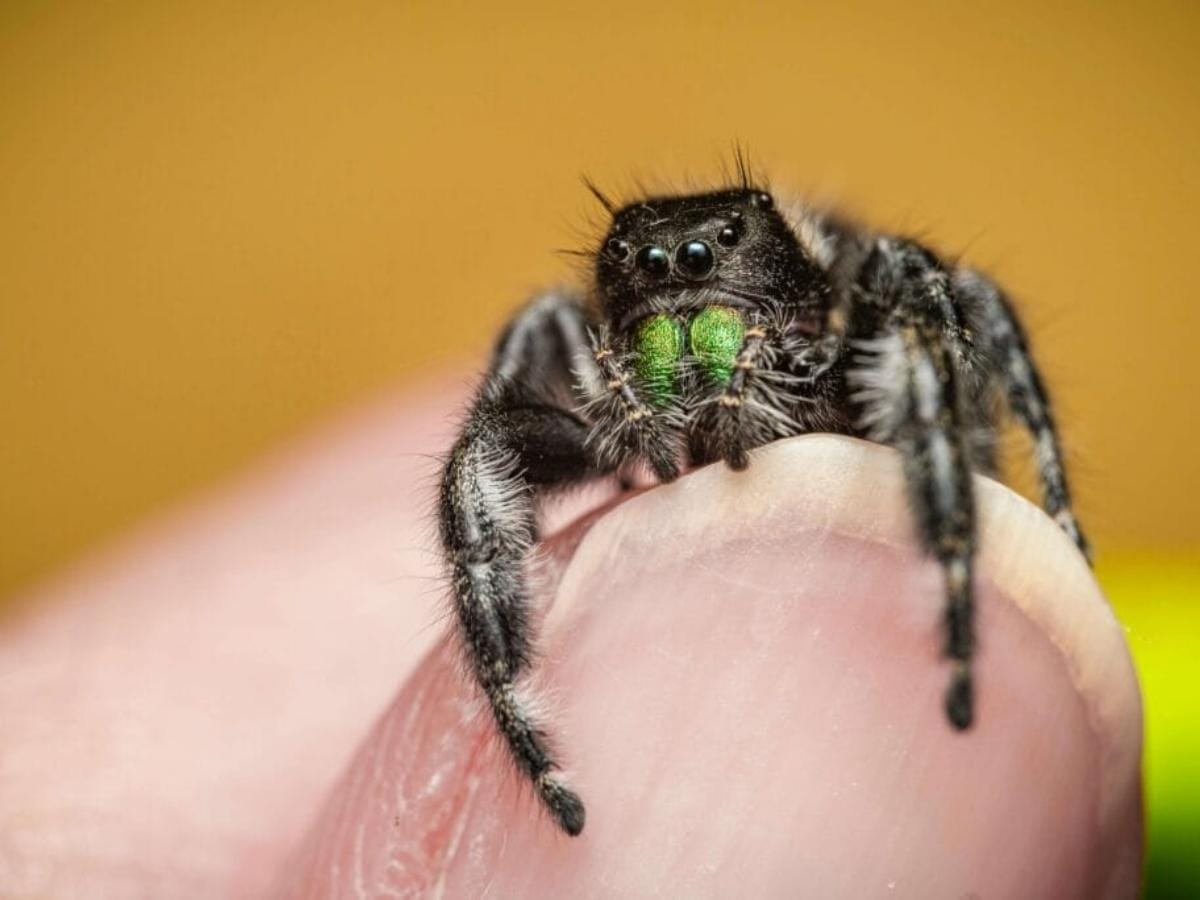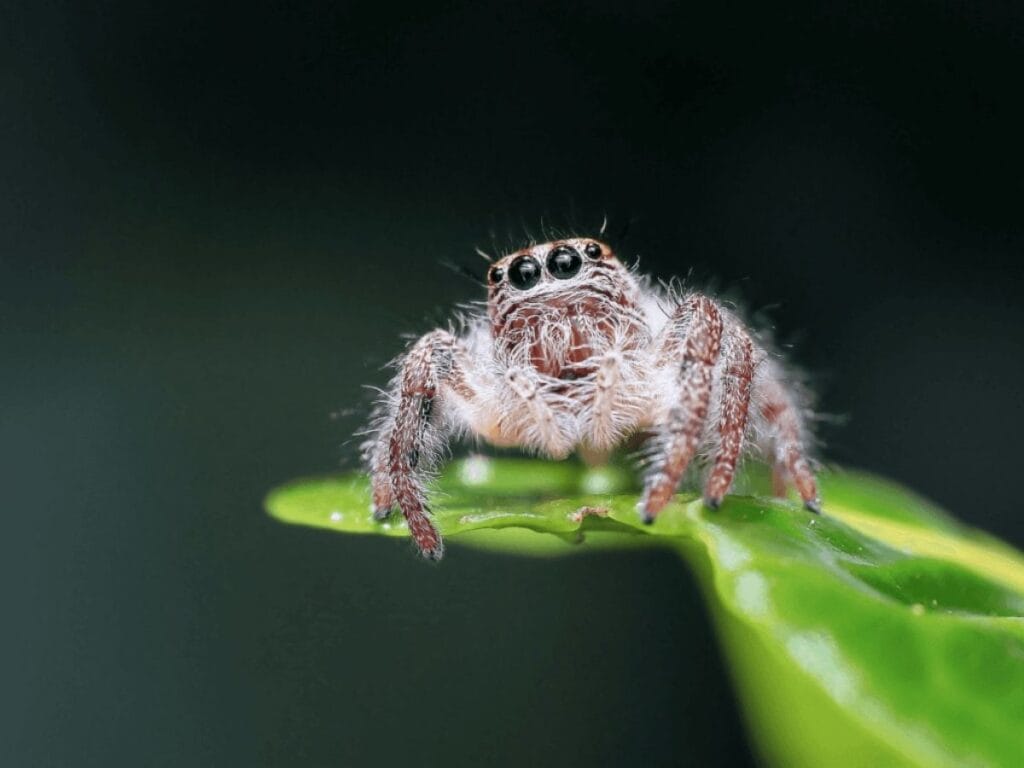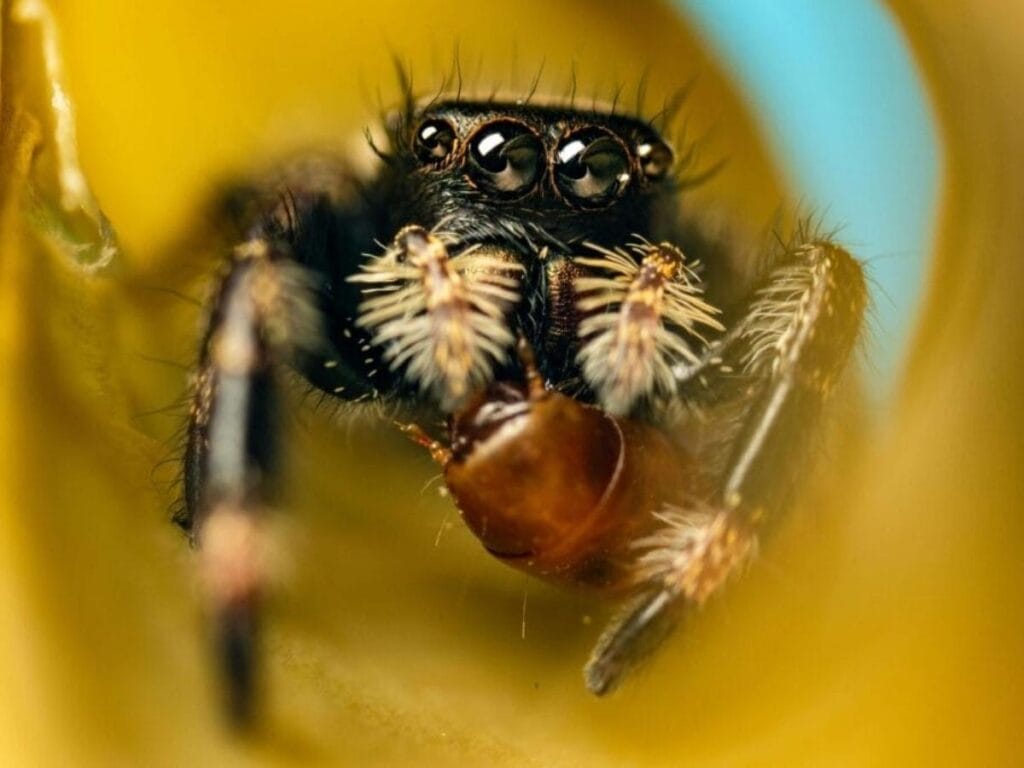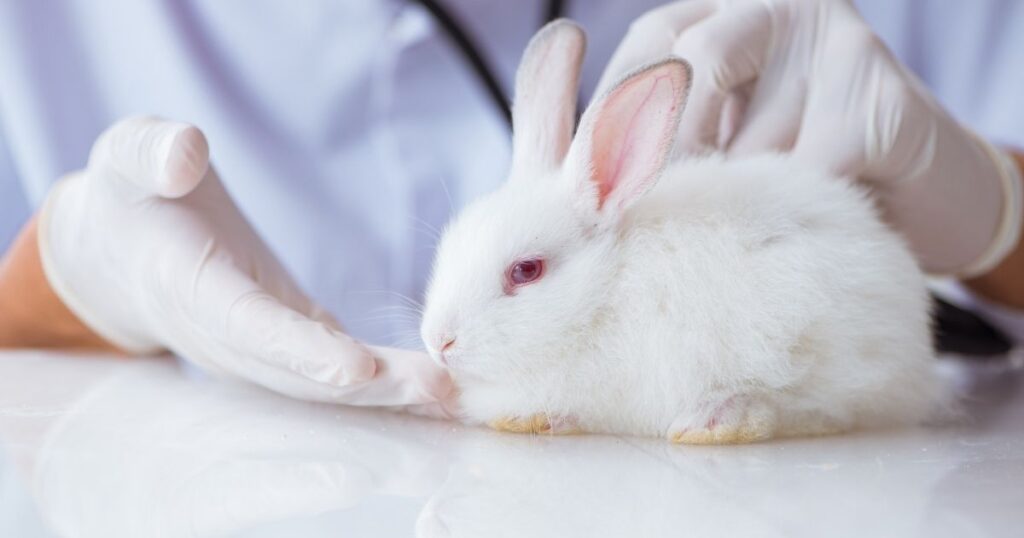Now Reading: How to Care for Your Pet Jumping Spider: A Simple Guide
- 01
How to Care for Your Pet Jumping Spider: A Simple Guide

How to Care for Your Pet Jumping Spider: A Simple Guide
Jumping spiders are fascinating little creatures that make unique and engaging pets. If you’re considering a jumping spider as a pet, or if you’re already a proud owner, this guide will help you understand how to care for your pet jumping spider and ensure it thrives in its new home.
Why Choose a Jumping Spider as a Pet?

Jumping spiders are not only cute but also incredibly interesting to watch. They have excellent vision and can leap up to 50 times their body length! This makes them one of the most active and entertaining pets you can have. Plus, they are relatively low-maintenance compared to other pets, making them perfect for beginners.
Must Read: 5 Best Pets Care Tips
How to Keep a Jumping Spider as a Pet?
Creating a suitable environment for your pet jumping spider is crucial for health and happiness. Here’s how to set up the ideal habitat:
Choose the Right Enclosure
A small glass terrarium or a plastic container with ventilation holes works well for a jumping spider. Aim for a size of at least 5 to 10 gallons. Ensure the enclosure is secure to prevent escapes, as these little jumping spider pets are quite agile!
Provide Proper Substrate
Use a substrate that retains moisture but also allows for good drainage. Coconut fiber or peat moss works well. This will help maintain humidity levels, which is essential for your spider’s well-being.
Add Hiding Spots

Jumping spiders love to explore and hide. Incorporate various hiding spots using small rocks, twigs, or artificial plants. This not only gives them a sense of security but also mimics their natural habitat.
Maintain Humidity and Temperature
Jumping spiders thrive in humidity levels around 50-70%. Mist the enclosure lightly a few times a week to maintain moisture. Keep the temperature between 70-80°F (21-27°C) for optimal health.
Feeding Your Pet Jumping Spider
Feeding your jumping spider is one of the most enjoyable parts of being a spider owner. These spiders are carnivorous and primarily eat live insects. Here’s what you need to know about feeding:
Choose the Right Food
Crickets, fruit flies, and small mealworms are excellent food choices for your pet jumping spider. Make sure the insects are appropriately sized—no larger than the spider’s body—to prevent choking.
Feeding Frequency
Young jumping spiders require feeding every day, while adults can be fed every 2-3 days. Be sure to remove any uneaten insects to prevent stress and maintain cleanliness in the enclosure.
Water Supply
While jumping spiders don’t drink water like other pets, they do need moisture. Lightly mist the enclosure to provide water droplets for them to drink. Avoid placing a water bowl, as jumping spiders can drown easily.
Handling Your Pet Jumping Spiders
One of the most rewarding aspects of having a jumping spider as pet is the opportunity to bond with it. However, proper handling is essential:
Be Gentle
When handling your pet jumping spider, be gentle and calm. They can be skittish, so it’s best to let them walk onto your hand rather than grabbing them.

Limit Handling Time
Keep handling sessions short to avoid stressing your spider. A few minutes is usually sufficient, especially if your spider is new to its environment.
Observe Their Behavior
Take time to observe your spider’s behavior. If it seems agitated or tries to escape, give it some space. Understanding your spider’s body language will help you build trust over time.
Common Health Issues
Like any pet, jumping spiders can face health issues. Here are a few common problems and how to address them:
1. Mold Growth
If you notice mould in the enclosure, it may indicate excessive moisture. Remove any mouldy materials and adjust your misting routine to prevent future growth.
2. Dehydration
If your spider appears lethargic or shrivelled, it may be dehydrated. Increase misting and ensure there are water droplets available for drinking.
3. Parasites
Occasionally, jumping spiders can be affected by mites or other parasites. If you suspect this, consult a veterinarian specialising in exotic pets for treatment options.
Also Read: Why is My Dog Pooping Blood?
Fun Facts About Pet Jumping Spiders
Jumping spiders are truly fascinating creatures that make unique pets. Here are some fun facts that highlight their charm:
- Incredible Jumpers
Jumping spiders can leap up to 50 times their body length! This impressive ability allows them to catch prey and navigate their environment with ease.
- Amazing Vision
They have eight eyes, with the two large central ones providing excellent vision. This allows them to spot movement from a distance, making them skilled hunters.
- Variety of Species
There are over 6,000 species of jumping spiders worldwide, each with its own unique colors and patterns. Some popular pet jumping spider breeds include the Phidippus audax and the Phidippus regius.
- Intelligent Hunters
Unlike many spiders that rely on webs to catch prey, jumping spiders stalk and pounce on their food, showcasing their intelligence and agility.
- Social Creatures
While they are generally solitary, some species can exhibit social behaviour, especially during mating seasons.
- Colourful Displays

Male jumping spiders are delights to observe. They often display vibrant colours and perform intricate courtship dances to attract females.
These fun facts illustrate why jumping spiders are such captivating pets!
Summing Up: Pet Jumping Spiders
Caring for your pet jumping spider can be a rewarding experience filled with wonder and excitement. By providing a suitable habitat, proper nutrition, and gentle handling, you can ensure your spider thrives. Remember, jumping spiders are unique pets that require specific care, but with a little effort, they can bring joy and fascination into your life.
So, whether you’re just starting your journey with a jumping spider as a pet or looking to enhance your current setup, this simple guide will help you every step of the way. Enjoy the adventure of being a pet spider owner, and watch as your little friend leaps into your heart!













